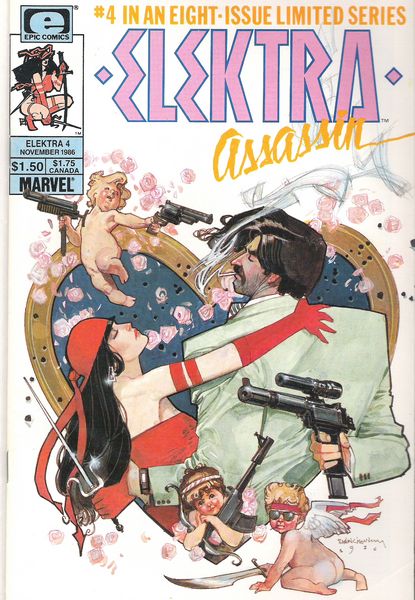A very strange thing has happened in the world of DJing where one’s skill as a DJ is judged by some as one’s ability to play two or more songs at the same time. I don’t know about you, but when I am sitting at home listening to music I never put on two pieces of music simultaneously to enjoy. One song at a time works just fine for me. This dynamic doesn’t change when I’m dancing or when I’m Djing. I like one song at a time. Maybe if you DJ “tracks” based around little more than a kickdrum and some synth squiggles, then you very well may need two, three, or even more sources of music playing simultaneously to create anything of marginal textural or compositional interest (It probably won’t do anything for me, however).
There are certain forms of repetitive dance music that always begin and end compositionally with 8 bars of percussion, specifically for the purpose of overlaying with another song of the same bpm. Most international music does not come with such “DJ-friendly” features and is not designed to be overlayed with another song. I don’t play tracks, I play songs. Usually with vocals. I have seen some bhangra DJs try to apply disco-mixing techniques to Panjabi music. Even when the primary beats are lined up as well as can be, the mix often sounds distractingly busy with the flurry of dhol beats, and often the vocals of the two songs will end up overlapping and clashing. Not a good look. I fully understand the importance of smooth transitions and keeping bodies moving, but I have seen many a dance floor undone by a DJ who was trying too hard to mix their selections. I will often witness that no matter how smoothly a technical DJ brings in a new song, the dancers will still clear the floor if it is not a song they want to dance to. Conversely, I have seen horrible train wrecks result in absolute abandon on the part of a room full of dancers if the next track is one they love. Two tracks that are not mixed may cause a slight hiccup on the dance floor, but a long awkward mix creates a much more distracting energy-depleting environment. Many DJs are convinced that they are not really DJing unless they traumatize the crowd with these embarrassingly drawn out episodes of ugliness. I see this often with DJs who are moving from DJing Western electronic music to more international music based in traditional rhythms. Their mixes sound great when they are DJing house music, and awfully embarrassing when they are attempting to play something more complicated rhythmically. Not all music is house music. Not all music is designed to be played simultaneously with other music that shares the same bpm.
People obsessed with mixing are usually “DJs” who have never played outside their bedrooms. Real DJing is about getting people excited, getting them moving, and keeping them moving. It all depends on the crowd, but I have consistently watched seamless beat-matched electronic sets wage a war of attrition against the dance floor. People get fatigued by the lack of variable tempo and the monotony of an entire set where each song is chosen not because it is the best song for that moment, but because of its ability to match the exact same rhythm of the song before it. BORING. You can practice your techniques in your bedroom all you want. There is no guarantee that anyone will want to listen once you finally leave the bedroom. Better to force your unpracticed self to DJ for actual dancers, however limited your ability, so you can see what actually works, and not just wank off in your room thinking you are some badass.
David Mancuso is as much a father of the original underground disco movement as anyone. He learned how to mix and then decided it didn’t agree with him. Now when he DJs he lets each song fade out to applause. After each song has been properly acknowledged he then goes on to the next. Now there is a man who realizes that the point is to feel music, not geek out on technical mixing.
I saw a Drum’n’Bass show at the Ohm with Anjali many moons ago. There were only a few dancers on the floor. However the DJ booth was mobbed by heavy guys with baseball caps and hoodies. They surrounded the DJ staring motionless and silent until she began a mix. Then they all jumped up and down and went crazy. Then when she went into the next song they returned to their silent, fixated, stationary ways, only to get amped up again when she began her next mix. Uhhhh, isn’t MUSIC the point of this? No one surrounding the DJ booth expressed any interest in any of the tracks the DJ was playing, either with their voices or their bodiess. All that mattered was the mix. Technical DJs will sacrifice anything for the mix. I remember when I first went to see the Beat Junkies play a decade ago. They would drop some classic old hip-hop jams. But even when I was on the floor going “Yeah, they’re playing Eric B. and Rakim” I wondered why Rakim’s voice sounded so high-pitched. To me the voices of the greatest MCs are not to be trifled with. You don’t pitch Chuck D. up or down for the benefit of the mix. Fuck you. In fact I don’t like the casual up-and-down-pitching of songs to fit a mix. I want to hear the music as it was intended to be heard, not chipmunky or Oscar-the-Grouchy just so you can maintain your same bpm.
I have no interest in playing a set where each song must match the tempo and rhythm of the song before it. If anything I want to vary the rhythm and tempo as much as possible in a set to keep things constantly surprising and challenging, both for me and the dancer. One of the best compliments I ever received in all my years of DJing was many years ago at a house party where a very musically-informed individual said he liked my sets because, “you never know what’s coming next.” I try. Yeah, sometimes I lose people by being too crazy and all-over-the-map (OK, I probably always lose them.), but I would rather lose people by being too crazy than for playing a set that is too monotonous. I understand there are people (on drugs) who want to hear an uninterrupted rhythm of the same bpm for an entire night. They hate “starting over” when the rhythm changes, and want to lose themselves in the dance (of one rhythm). That’s fine for them. I get bored no matter what the genre if it is the same rhythm over and over for 15 minutes or more. “But what about bhangra,” you ask, “doesn’t that get boring?” Well, for me, no. Bhangra is not the same as house, techno, trance, Drum’n’Bass. It is not limited to one rhythm. Bhangra is a folk music that contains dozens of rhythms. The bpm can vary from 80 to 180 depending on the song. Often an individual track will have different sections that jump from slowest to fastest and back, or vice versa. Modern bhangra will also incorporate any variety of other rhythms in with the traditional patterns. An “all bhangra” set could include, house, techno, drum’n’bass, reggae, dancehall, trance, 2-step, grime, hip-hop, along with the traditional rhythms. Some people may get sick of the tumbi and the dhols and the constant Panjabi vocals, but that is my idea of heaven. When I’m listening to the tumbi, the dhol, the algoza, and a good Panjabi singer, I don’t need anything else. That’s my idea of trance music.
In my experience, really good DJs, who also happen to be technical DJs, have no issues with DJs who use feeling and not tempo to guide their track selections. (DJ Safi says the Japanese call these DJs “Free Soul DJs.” Or at least I assume that’s an English approximation of the Japanese term.) Real DJs love music. Succesful DJs don’t need to berate anyone else’s skills. Its the people who don’t really love music, but imagine themselves as some sort of rockstar DJ while they play free turntable night, if they ever even leave their room, that talk shit about DJs that can’t mix. Oftentimes these DJs’ entire musical knowledge will consist of the usual mainstream pop detritus we are all surrounded by, a few years of an electronic subgenre or two, and a few record labels that produce these subgenres. Their knowledge of the vast range and history of recorded music of this country is woefullly narrow, and of course they will have no knowledge of any traditional or popular music from anywhere else in the world.
I’ll never forget a quote I read in a British DJ magazine years ago. A DJ was quoted as saying DJing is judged on a 5 point scale. You get 2 points for the songs you play, 2 points for the order you play them in, and 1 point for mixing.
Peace,
IK

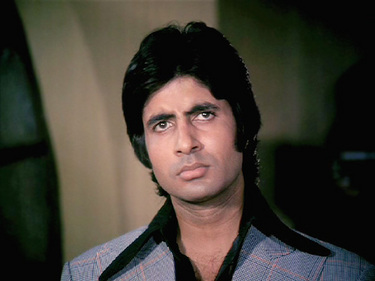
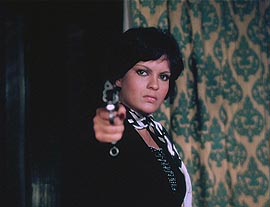
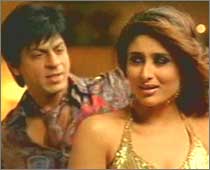 Yeah right.
Yeah right.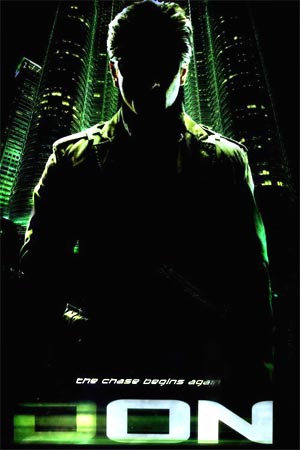
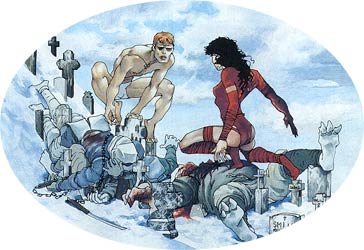
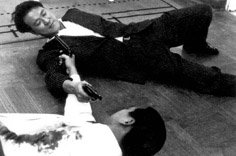 but what John Woo calls “romantic violence.” Whether the fists, feet, and improvised weapons of Jackie Chan,
but what John Woo calls “romantic violence.” Whether the fists, feet, and improvised weapons of Jackie Chan,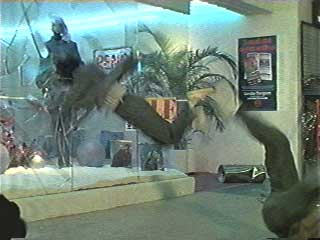 or the ballet of bullets of Woo’s own work, I love me some highly stylized and choreographed violence. In fact, a martial arts film, or a highly stylized action film, are more likely to get me into the theater than any thing else. (Except for a new mind-twister David Lynch film. “Inland Empire” anyone? Or Sacha Baron Cohen’s next opus.) I never want to fire a gun at someone or inflict violence with my hands, but I love watching portrayals of this, done gracefully, and artfully. I know I am not alone in this among peace-lovers. There is something about fantasy violence that appeals to all sorts of otherwise pacifistic, non-violent personalities.
or the ballet of bullets of Woo’s own work, I love me some highly stylized and choreographed violence. In fact, a martial arts film, or a highly stylized action film, are more likely to get me into the theater than any thing else. (Except for a new mind-twister David Lynch film. “Inland Empire” anyone? Or Sacha Baron Cohen’s next opus.) I never want to fire a gun at someone or inflict violence with my hands, but I love watching portrayals of this, done gracefully, and artfully. I know I am not alone in this among peace-lovers. There is something about fantasy violence that appeals to all sorts of otherwise pacifistic, non-violent personalities.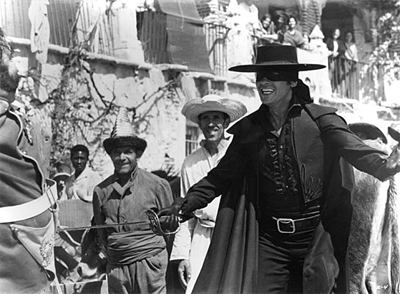
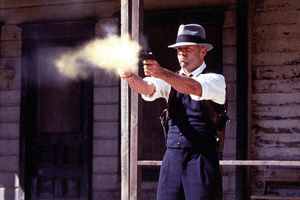 Hong Kong either make use of Hong Kong action directors or borrow heavily from their innovations. Walter Hill’s film “Last Man Standing” was the first Western action film during the height of my Hong Kong obsession in the ’90s that I actually thought had compelling action scenes, and Buce Willis two-guns-blazing shtick
Hong Kong either make use of Hong Kong action directors or borrow heavily from their innovations. Walter Hill’s film “Last Man Standing” was the first Western action film during the height of my Hong Kong obsession in the ’90s that I actually thought had compelling action scenes, and Buce Willis two-guns-blazing shtick  could never have existed without John Woo.
could never have existed without John Woo.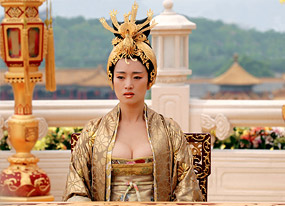
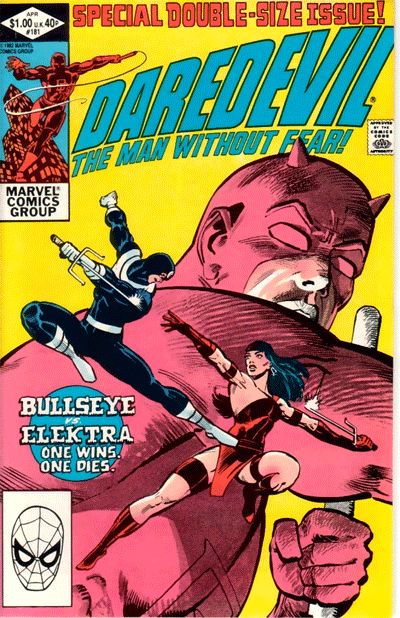
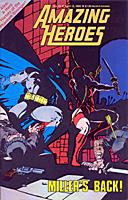 His artwork struck me as so powerful and iconic and perfect. In fact I just now went and ordered online an old issue of Amazing Heroes that featured these sketches along with work from “Elektra: Lives Again.” Realizing just how influential he was to me I felt unfair about writing a post trashing him for a perceived drop in quaility. It has made me want to go back and pick up series I had blown off to see if I was missing anything. Yeah, just like I did with “Man Without Fear.” No matter how disappointing that was I am still seeking out other overlooked works. I read “DK2.” Not sure if I had ever gotten all the way through before. I know initially I never bothered to even buy the last issue. Amazon is filled with hateful reviews but I feel like I am more sympathetic than most even if the impact of the series on me was negligible. I also just read “300” seeing how there is a movie coming out and all. My first Miller post has initiated a massive bout of reflection on the man, his work, and its influence on me. I have been so disinterested in his work for 15 years now that I had to remember just how central the man was to my creative consciousness throughout the ’80s. No one’s creative work so impacted me again and again for such a stretch of years. Until Grant Morrison . . .
His artwork struck me as so powerful and iconic and perfect. In fact I just now went and ordered online an old issue of Amazing Heroes that featured these sketches along with work from “Elektra: Lives Again.” Realizing just how influential he was to me I felt unfair about writing a post trashing him for a perceived drop in quaility. It has made me want to go back and pick up series I had blown off to see if I was missing anything. Yeah, just like I did with “Man Without Fear.” No matter how disappointing that was I am still seeking out other overlooked works. I read “DK2.” Not sure if I had ever gotten all the way through before. I know initially I never bothered to even buy the last issue. Amazon is filled with hateful reviews but I feel like I am more sympathetic than most even if the impact of the series on me was negligible. I also just read “300” seeing how there is a movie coming out and all. My first Miller post has initiated a massive bout of reflection on the man, his work, and its influence on me. I have been so disinterested in his work for 15 years now that I had to remember just how central the man was to my creative consciousness throughout the ’80s. No one’s creative work so impacted me again and again for such a stretch of years. Until Grant Morrison . . . I found a stack of issues from this run at a garage sale for a quarter each back around ’81-’82 which was the only way I could afford to buy more than an issue or two as a child. After Jack Kirby, Frank Miller was the biggest influence on me wanting to become a comic book writer and artist. Frank Miller continued to be one of my all-time favorite comic book creators up through his writing on “Elektra: Assassin,” “Daredevil: Born Again,” and “Batman: Year One.” Then after that point (in the late ’80s) whatever work of his I picked up just didn’t have “it” anymore. His work on “Ronin” and “Elektra: Assassin” were absolutely the most powerful artistic experiences I had as an adolescent. After finishing “Ronin” with the fold-out pages at the end
I found a stack of issues from this run at a garage sale for a quarter each back around ’81-’82 which was the only way I could afford to buy more than an issue or two as a child. After Jack Kirby, Frank Miller was the biggest influence on me wanting to become a comic book writer and artist. Frank Miller continued to be one of my all-time favorite comic book creators up through his writing on “Elektra: Assassin,” “Daredevil: Born Again,” and “Batman: Year One.” Then after that point (in the late ’80s) whatever work of his I picked up just didn’t have “it” anymore. His work on “Ronin” and “Elektra: Assassin” were absolutely the most powerful artistic experiences I had as an adolescent. After finishing “Ronin” with the fold-out pages at the end 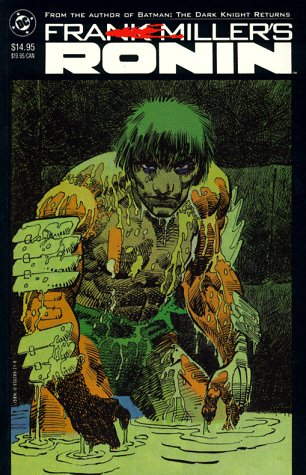 I sat stunned in my room for the evening, completely emptied. I still use the ending of that series and the “Elektra: Assassin” series as my gold standards for the powerful impact I expect the ending of a narrative to have. (I loved Bendis’s recent run on Daredevil but I found the ending of his tenure to be more of a “to be continued” than a powerful finale.) When “Elektra: Assassin” issued in 1986 that was the most experimental comics work I had seen both visually (Bill Sienkiewicz) and narratively (Miller) by a longshot up until that point.
I sat stunned in my room for the evening, completely emptied. I still use the ending of that series and the “Elektra: Assassin” series as my gold standards for the powerful impact I expect the ending of a narrative to have. (I loved Bendis’s recent run on Daredevil but I found the ending of his tenure to be more of a “to be continued” than a powerful finale.) When “Elektra: Assassin” issued in 1986 that was the most experimental comics work I had seen both visually (Bill Sienkiewicz) and narratively (Miller) by a longshot up until that point.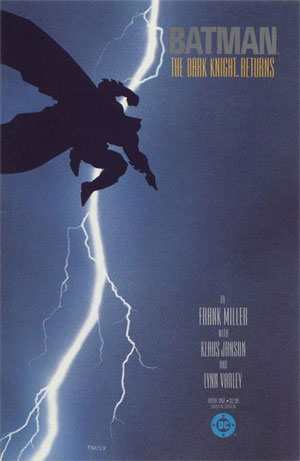 I was so uninterested in his work by the time the “Daredevil: Man Without Fear” limited series dropped that I never bothered to even read a single issue. I finally picked up the “Daredevil: Man Without Fear” collection this week to see if I had missed anything when I blew if off during its initial publication. Well, I didn’t miss much. The writing comes off as very amateurish and uninspired. Its attempts at being writerly are flat and unmoving. I have never been a fan of Johnny Romita Jr. as an artist and this series didn’t change that for me. I find his linework totally unappealing. His work is too comic-booky for me to effectively illustrate a “dark” series like this. I don’t care for his depictions of Matt Murdock (at any age) or Elektra. There are moments with some dramatic power that I have to cop to in the art, but I basically just didn’t appreciate him on this series at all. Despite finding the writerly tone of the series embarrassing I was at first open to Miller’s attempts to more thoroughly graft his character creations to the Daredevil origin story. Unfortunately I didn’t buy the character of the young Stick or his nighttime training sessions with Matt. Trying to retcon in a tragic early mistake of Matt’s that would haunt him forever (despite him never having thought about it in the comic before) didn’t work for me at all. The young sidekick was as unbelievable and lame (and unnecessary) at they all are. The kidnapping plot and the assassin Lark, equally uninspired and lame. The only interesting thing for me were the details Miller mentioned showing just how depraved the activities of Kingpin’s crime organization are.
I was so uninterested in his work by the time the “Daredevil: Man Without Fear” limited series dropped that I never bothered to even read a single issue. I finally picked up the “Daredevil: Man Without Fear” collection this week to see if I had missed anything when I blew if off during its initial publication. Well, I didn’t miss much. The writing comes off as very amateurish and uninspired. Its attempts at being writerly are flat and unmoving. I have never been a fan of Johnny Romita Jr. as an artist and this series didn’t change that for me. I find his linework totally unappealing. His work is too comic-booky for me to effectively illustrate a “dark” series like this. I don’t care for his depictions of Matt Murdock (at any age) or Elektra. There are moments with some dramatic power that I have to cop to in the art, but I basically just didn’t appreciate him on this series at all. Despite finding the writerly tone of the series embarrassing I was at first open to Miller’s attempts to more thoroughly graft his character creations to the Daredevil origin story. Unfortunately I didn’t buy the character of the young Stick or his nighttime training sessions with Matt. Trying to retcon in a tragic early mistake of Matt’s that would haunt him forever (despite him never having thought about it in the comic before) didn’t work for me at all. The young sidekick was as unbelievable and lame (and unnecessary) at they all are. The kidnapping plot and the assassin Lark, equally uninspired and lame. The only interesting thing for me were the details Miller mentioned showing just how depraved the activities of Kingpin’s crime organization are.